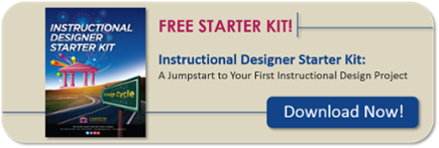Photo by: Solidcolours via Canva
Training is an investment, and you want to make sure that investment is maximized. To ensure training is transferred, there must be a partnership between trainers, supervisors, and learners. A performance kit is one tool to help with this partnership before, during, and after training.
The performance kit is distributed to the supervisors before training and becomes a job aid to help guide the supervisor and learner through preparation before the training, expectations during training, and skill transfer after training.
Benefits of Distributing Performance Kits
Before Training
- Learners have an idea of what to expect from the course. This ensures that only committed learners attend.
- Leaners will determine for themselves how the training will benefit them. This creates better buy-in and motivation.
- Learners can begin the training transfer process before the first day of the course.
During Training
- Learners come to the course with the proper transfer of training mindset.
- Learners who recognize the benefits of training will be committed to learning.
- Less time is spent on explaining the importance of the course.
- Training will be viewed as a process that begins before attending the course, versus a single, isolated event.
After Training
- Keeps learners and supervisors on track for transferring skills to the workplace.
- Provides a written record of transfer activities for future use.
What to Include in the Performance Kit
Pre-Course Email to Supervisor
Provides the supervisor with details about their employee’s upcoming training, including the date, location (if applicable), and format (in-person or virtual), a breakdown of what the employee will learn, the minimum prerequisites for the course, how the course supports corporate objectives, and the supervisor’s role in supporting the transfer of training (at a minimum they should make sure their employee’s work is covered during their absence).
Pre-Course Email to Learner
Provides the learner with the same information as the supervisor and makes the learner aware of the actions they must take in conjunction with their supervisor before, during, and after training.
Development Plan
Generates discussion between the supervisor and the learner to encourage them to think about training as an ongoing process of career development, rather than just one event.
- Discussion items before training:
- Does the employee believe they really need this course? Why? Why not?
- How will this course help the employee do their job in the next month?
- How will this course help the employee achieve their long-term goals?
- Discussion items after training:
- What significant skills and/or knowledge were learned in this course?
- What action plan items does the employee plan to implement in the next week? In the next month?
- What assistance does the employee require from their supervisor to implement the action items?
Action Plan
Encourages the learner to make a stronger commitment to applying the tasks they will learn during training. This should be distributed to the learner before training begins and brought to training with them.
Post-Course Meeting Discussion Plan
Includes discussion questions such as:
- What was the employee’s impression of the course? Did the course meet their needs?
- How confident is the employee that they can perform each of the objectives from the course?
- Did the employee record any items in their action plan? What are they?
- How will the employee overcome barriers implementing their action items?
- Are their any obstacles that might hinder the employee’s performance? How can the supervisor help the employee overcome them?
- When will the employee and supervisor meet again to review the implementation of the action plan?
Using a tool like the performance kit can help communicate the roles the learners and their supervisors play, ensuring your training investment is maximized and training is transferred!


